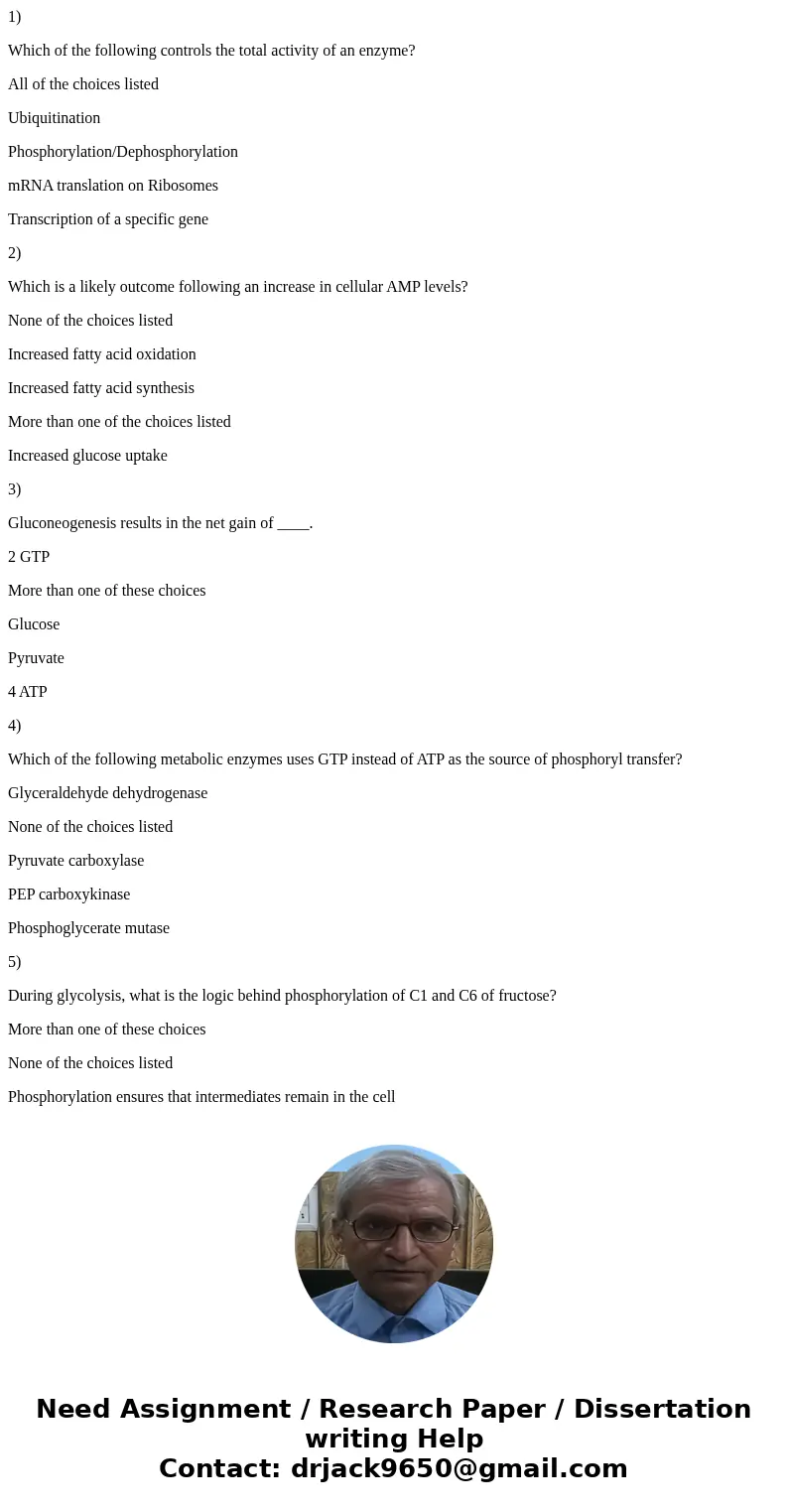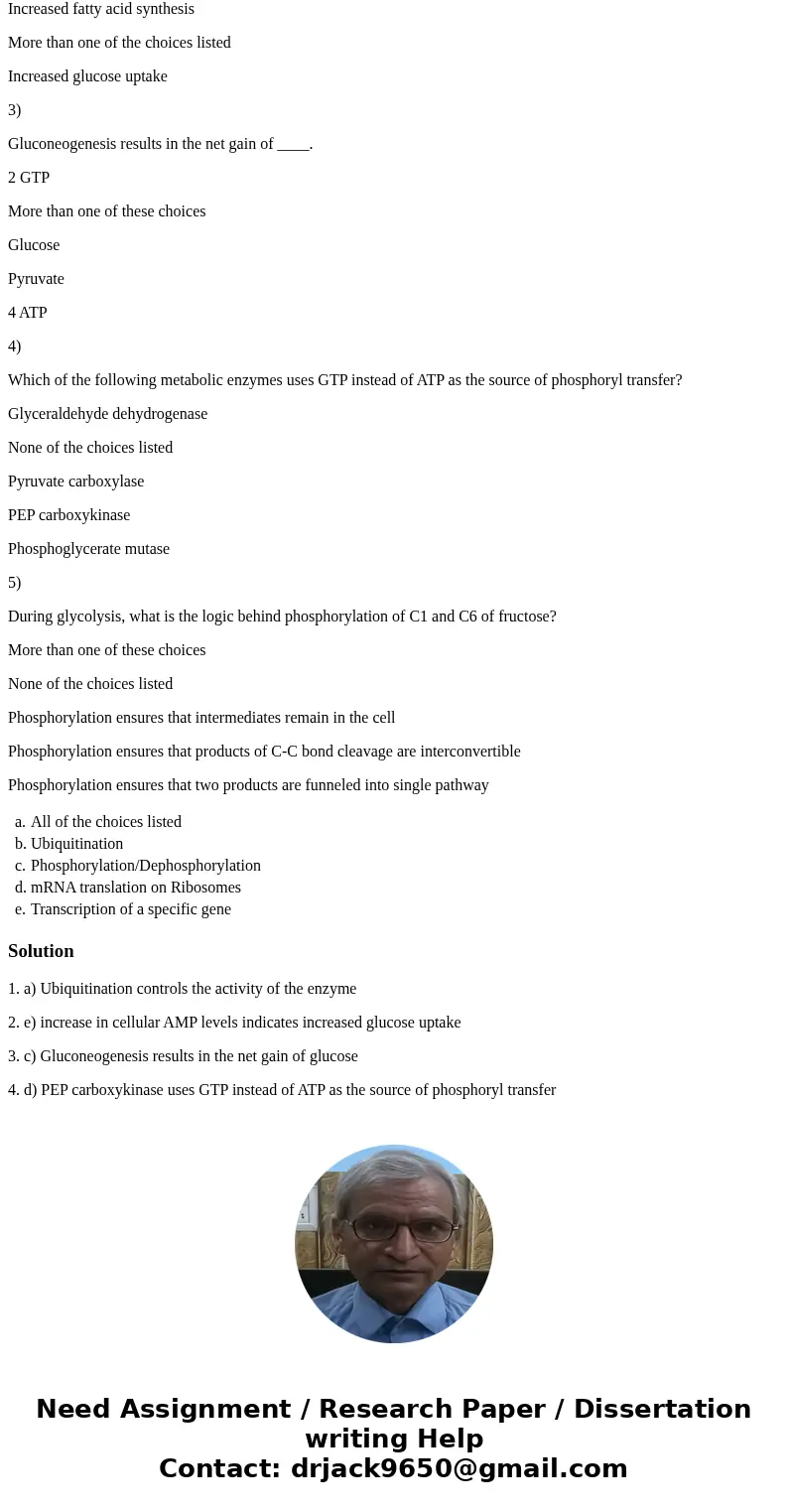1 Which of the following controls the total activity of an e
1)
Which of the following controls the total activity of an enzyme?
All of the choices listed
Ubiquitination
Phosphorylation/Dephosphorylation
mRNA translation on Ribosomes
Transcription of a specific gene
2)
Which is a likely outcome following an increase in cellular AMP levels?
None of the choices listed
Increased fatty acid oxidation
Increased fatty acid synthesis
More than one of the choices listed
Increased glucose uptake
3)
Gluconeogenesis results in the net gain of ____.
2 GTP
More than one of these choices
Glucose
Pyruvate
4 ATP
4)
Which of the following metabolic enzymes uses GTP instead of ATP as the source of phosphoryl transfer?
Glyceraldehyde dehydrogenase
None of the choices listed
Pyruvate carboxylase
PEP carboxykinase
Phosphoglycerate mutase
5)
During glycolysis, what is the logic behind phosphorylation of C1 and C6 of fructose?
More than one of these choices
None of the choices listed
Phosphorylation ensures that intermediates remain in the cell
Phosphorylation ensures that products of C-C bond cleavage are interconvertible
Phosphorylation ensures that two products are funneled into single pathway
| a. | All of the choices listed | |
| b. | Ubiquitination | |
| c. | Phosphorylation/Dephosphorylation | |
| d. | mRNA translation on Ribosomes | |
| e. | Transcription of a specific gene |
Solution
1. a) Ubiquitination controls the activity of the enzyme
2. e) increase in cellular AMP levels indicates increased glucose uptake
3. c) Gluconeogenesis results in the net gain of glucose
4. d) PEP carboxykinase uses GTP instead of ATP as the source of phosphoryl transfer


 Homework Sourse
Homework Sourse